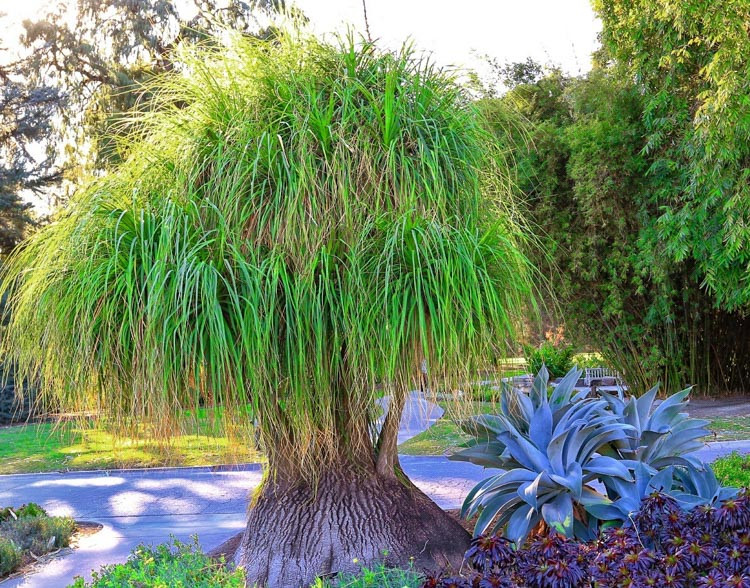Ponytail Palm: Growing & Caring for this Unique Houseplant
The Ponytail Palm, scientifically known as Beaucarnea recurvata, is a unique and striking plant, beloved in both indoor and outdoor gardening for its distinctive appearance and ease of care. Originating from the southeastern deserts of Mexico, it’s a popular choice for those seeking an exotic, low-maintenance addition to their plant collection.
Description: Despite its common name, the Ponytail Palm is not a true palm but a member of the Agave family. It features a bulbous base (caudex) which functions as a water reservoir, making the plant drought-tolerant. Rising from this base is a slender, woody stem, which branches out at the top to produce long, cascading leaves that resemble a ponytail, hence the name.
Size: As a slow-growing plant, it typically reaches heights of 6 to 8 feet (180-240 cm) when grown indoors. In its natural habitat or in optimal outdoor conditions, it can grow much taller, sometimes up to 30 feet (9 meters).
Care Requirements: The Ponytail Palm is highly valued for its low maintenance needs. It thrives in bright, indirect light but can tolerate lower light levels. The key to its care lies in its watering – it prefers the soil to be completely dry between waterings, and overwatering can lead to root rot. The plant is comfortable in average room temperature and does not require high humidity.
Ornamental Use: With its unique shape and foliage, the Ponytail Palm serves as a perfect focal point in interior design, adding a touch of the tropics to any setting. It’s equally suited to being a standalone specimen in gardens or patios, especially in arid or drought-prone areas.
Repotting and Propagation: The plant’s slow growth means it doesn’t require frequent repotting. When repotting is necessary, it’s important to choose a pot only slightly larger than the previous one. The Ponytail Palm can be propagated from the offsets or “pups” that sometimes grow at the base of the plant.
Toxicity: The Ponytail Palm is non-toxic to humans and pets, making it a safe choice for households with animals.
Pests and Problems: While generally pest-resistant, it can occasionally face issues with spider mites, mealybugs or scale insects, especially when grown indoors. These can usually be managed with appropriate insecticides or natural remedies.

